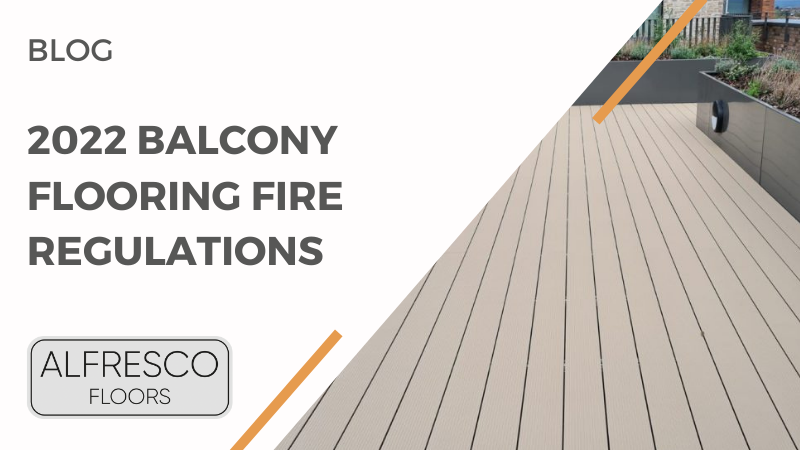
06 Dec 2022 Balcony Flooring Fire Regulations
Despite the most recent updates to the building and fire regulations having been in place since 2018, it’s still important to highlight them and understand what they are, why they were introduced and what it means for your future projects.
As we head into the new year, it’s likely you’ll have a range of new projects to specify for, making it a fantastic time to revisit the regulations and find the best balcony flooring options available.
This blog has been written to ensure that when it comes to selecting the materials for your 2022 projects, you’re meeting the latest fire regulations and have all the information you need to provide results of the highest possible standards.

What Height Do Fire Regulations Apply?
Following the Grenfell tragedy and subsequent Hackitt Review, the UK government introduced a new Building Safety Bill to help improve accountability and control risk in the event of another disaster.
Part of this bill states that the external walls or specified attachments of buildings with 2 or more residencies and that are over 18 metres (11 metres in Scotland) should use Class-A Rated materials. Although there is still some dispute as to whether this should be lowered to 11m in height nationwide, it’s important to make sure the correct materials are being used.
Building height aside, many architects are specifying Class-A Rated materials on all projects as best practice and a means of protecting their reputation as 2022 begins.
What About the Fire Safety Act 2021?
Officially made into law in April 2021 and expected to be in force by 2022, The Fire Safety Act impacts those considered responsible persons.
Essentially, the Fire Safety Act places further responsibilities on those in charge of the development and construction of residential buildings, giving them the legal duty to find and deal with any potentially dangerous issues.
What this means for you when you’re specifying on balcony projects is that there is even more importance on selecting the correct materials and equipment, ensuring everything is done for the safety of all parties involved.
Do I Need Class A Materials On All Specified Attachments?
As defined by BS 8579:2020 and the ‘Guide To The Design of Balconies and Terraces’, the ban on combustible materials refers to a ‘specified attachment’ on a building.
As balconies are attached to an external wall, they fall into this category meaning that you have a legal obligation to ensure it is constructed using Class A materials.
This means that regardless of height when you’re working exclusively on these specified attachments, it is essential to use Class-A Rated materials.
What Are Class A Materials?
We’ve spoken a lot about Class-A rated materials and it’s important to discuss what exactly they are and how they are rated.
Materials are rated based on their levels of combustibility and how they perform against fire. This leads to what is known as the Euroclass system and the categorisation of materials from A1 (completely non-combustible) through to F (highly combustible).
With balconies and other specified attachments requiring non-combustible materials, you should only be specifying Class A materials on these projects.
But these regulations shouldn’t limit your options and there are a variety of Class-A material options offering the desired levels of non-combustibility including:

Conclusion
Although much of the regulation has remained the same since the influx of new legislation and guidance following Grenfell, it’s critical to ensure you are up to date.
With things such as the Fire Safety Act recently coming into law, it gives responsible persons greater powers to spot any issues that might arise during the construction. On top of this, understanding the type of materials you can use in your projects is essential.
If you’d like to discuss your 2022 project in more details or understand the materials for your next project, then speak with our expert team today.




Sorry, the comment form is closed at this time.